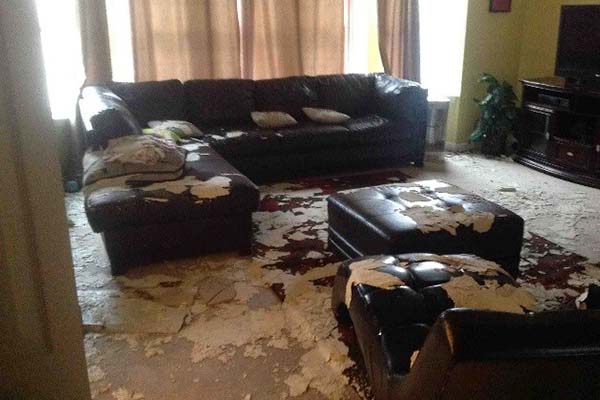Water damage cleanup is a comprehensive process that involves much more than removing standing water. While the priority is extracting visible moisture, the hidden dampness in walls, floors, and ceilings can create long-term problems. Dehumidification is an often overlooked step in water damage cleanup. Still, restoring your home to its pre-damage state is critical in preventing lingering moisture’s long-lasting impact.
This ensures your home in Pittsburgh, particularly in areas like Allegheny, Beaver, Butler, Westmoreland, and Washington Counties, is completely dry and safe from future damage.
Why Dehumidification is Essential After Water Damage
Water damage can occur due to various reasons, including flooding from heavy rains, burst pipes, or appliance failures. After the visible water is extracted, moisture can penetrate deep into building materials, creating concealed areas of dampness. Effective water damage cleanup necessitates a comprehensive approach to thoroughly drying these materials, and this is where dehumidification becomes crucial.
Dehumidification lowers the humidity level inside your home, accelerating the drying process. Without this critical step, wood, drywall, and insulation can retain moisture, leading to mold growth, rot, and other structural issues.
Preventing Mold Growth with Advanced Dehumidification Services | Water Damage Cleanup
Mold is one of the most significant risks of water damage, particularly in Pittsburgh’s humid climate. When moisture remains in the air, mold can quickly take hold, causing physical damage to your property and health risks to anyone in the home. Mold grows within 24 to 48 hours of water exposure, making quick and effective water damage cleanup crucial.
Dehumidification services reduce the humidity in your home, preventing the conditions in which mold thrives. Effectively removing moisture from the air and materials minimizes mold growth risk, making dehumidification a vital step in safeguarding your home after water damage.
Also read: Water Damage Cleanup Mistakes to Avoid
How Does Dehumidification Fit into the Water Damage Cleanup Process?
After the initial water extraction phase, water damage cleanup enters the drying stage, where dehumidification becomes critical. Dehumidification is not just about removing moisture from the air; it also involves drying out materials like carpeting, drywall, and wooden beams that have absorbed water.
While dehumidifiers extract moisture, air movers circulate the air, accelerating the drying process. Together, these tools ensure moisture doesn’t linger in the building, which can otherwise contribute to long-term issues such as structural damage, unpleasant odors, and potential mold infestations.
Ensuring Comprehensive Cleanup with Dehumidification
Water damage cleanup requires more than just visible water removal. Dehumidification is essential to fully restoring your home to its pre-damage condition. By reducing moisture levels, preventing mold growth, and ensuring that your property is dried thoroughly, dehumidification services help safeguard your home’s structure and health.
If you are dealing with water damage, trust the experts at ServiceMaster of Greater Pittsburgh for complete and adequate water damage cleanup. We are committed to restoring your home quickly and efficiently—contact us today for professional water damage restoration services.

